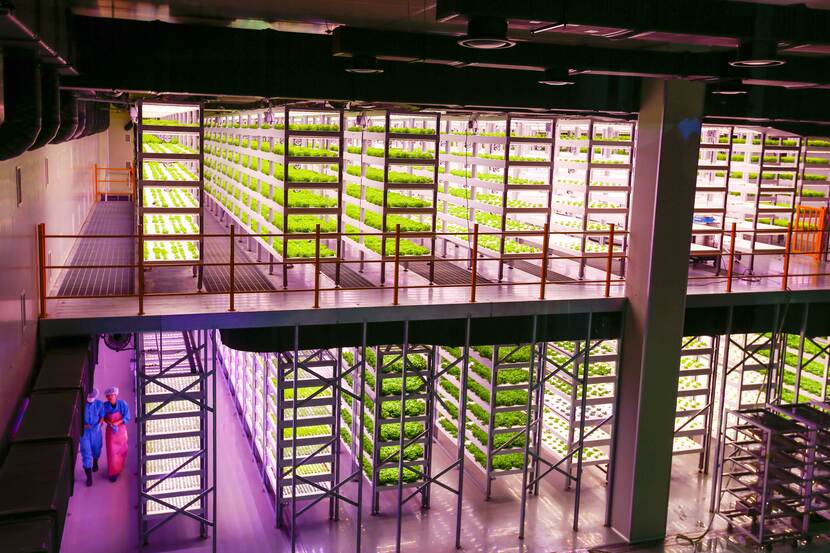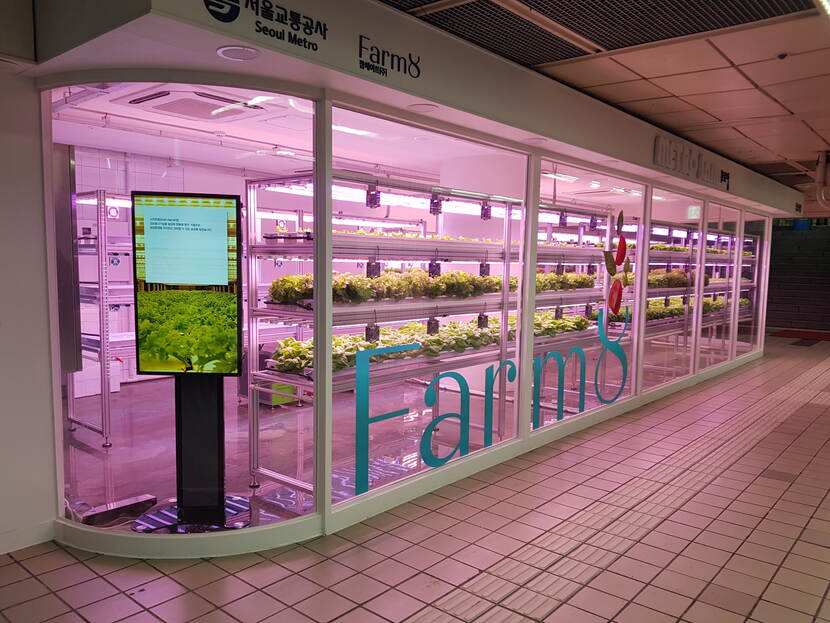Success story on vertical farming in South Korea
LED lights are becoming cheaper and cheaper, however they can never be cheaper than free sunshine. In that sense, many greenhouse builders say that vertical farming is still not economical than regular glass greenhouses. Therefore, vertical farming has mainly been used for high value crops such as medicine plants, marijuana and luxury flowers in many countries. Can vertical farming be economical for vegetable production? We have a success story in South Korea.

Vertical farming in Pyeongtaek
Farm 8, a Korean agricultural corporation, is successfully doing business with vertically-grown vegetables. This company produces 1.2 ton of leaf vegetables daily in a 12-story apartment building in Pyeongtaek city, Gyeonggi province. If one person eats 100 grams of salad, the farm can feed 12,000 people a day.
The vegetable company founded in 2004 completed its expansion during the 2nd half of 2019, creating a 2,000 square-meter interior farm. The building keeps the temperature at 23 degrees Celsius and keeps out insects, eliminating the need for pesticides. Farm 8’s sales rose 67 percent from 28.3 billion won (20.4 million euros) in 2017 to 47.3 billion won (34.0 million euros) in 2019. The company also grew bigger, from 192 to 270 employees over the same period.
Efficiency is key for Farm 8. Along with the vertical structure that makes the most out of the building's space, the company increases its productivity by using a cost-effective automated system to adjust lighting, temperature, humidity and carbon dioxide levels to create a suitable climate for vegetables.
Korea’s extreme weather conditions, irregular rainfall and insects flourishing in the summer season ask conventional farming for a lot of efforts and costs for irrigation, climate control and pest control. According to an OECD report, Korean agricultural products are almost twice as expensive as world average. Vertical farming can be free from these tough conditions. The cost difference between vertical farming and conventional farming, which are generally big due to energy costs in vertical farming, can be much less in South Korea. Furthermore, Farm 8 uses the strengths of vertical farming (pesticide-free, insect-free and sustainability) actively as marketing points.
Korean agriculture is relatively underdeveloped compared to other industries. In particular, inefficiency in agro logistics makes retail prices higher while farmers suffer from low incomes. Farm 8 has focused on this subject as a solution to narrow the gap between producer and retail prices, by packaging final products by themselves and distributing directly to retail markets based on partnership with retailers.

Metro farm in Seoul
Farm 8 recently established ‘Metro farms’ in five subway stations, together with the Seoul Metropolitan Government. They are promoting these metro farms as a way to effectively utilize unused spaces and carry out urban farming. It also allows partial access to people passing by, and a viewing window where they can look at how smart farms operate, while also providing clean air.
<Source: Farm 8 and Joongang Daily>